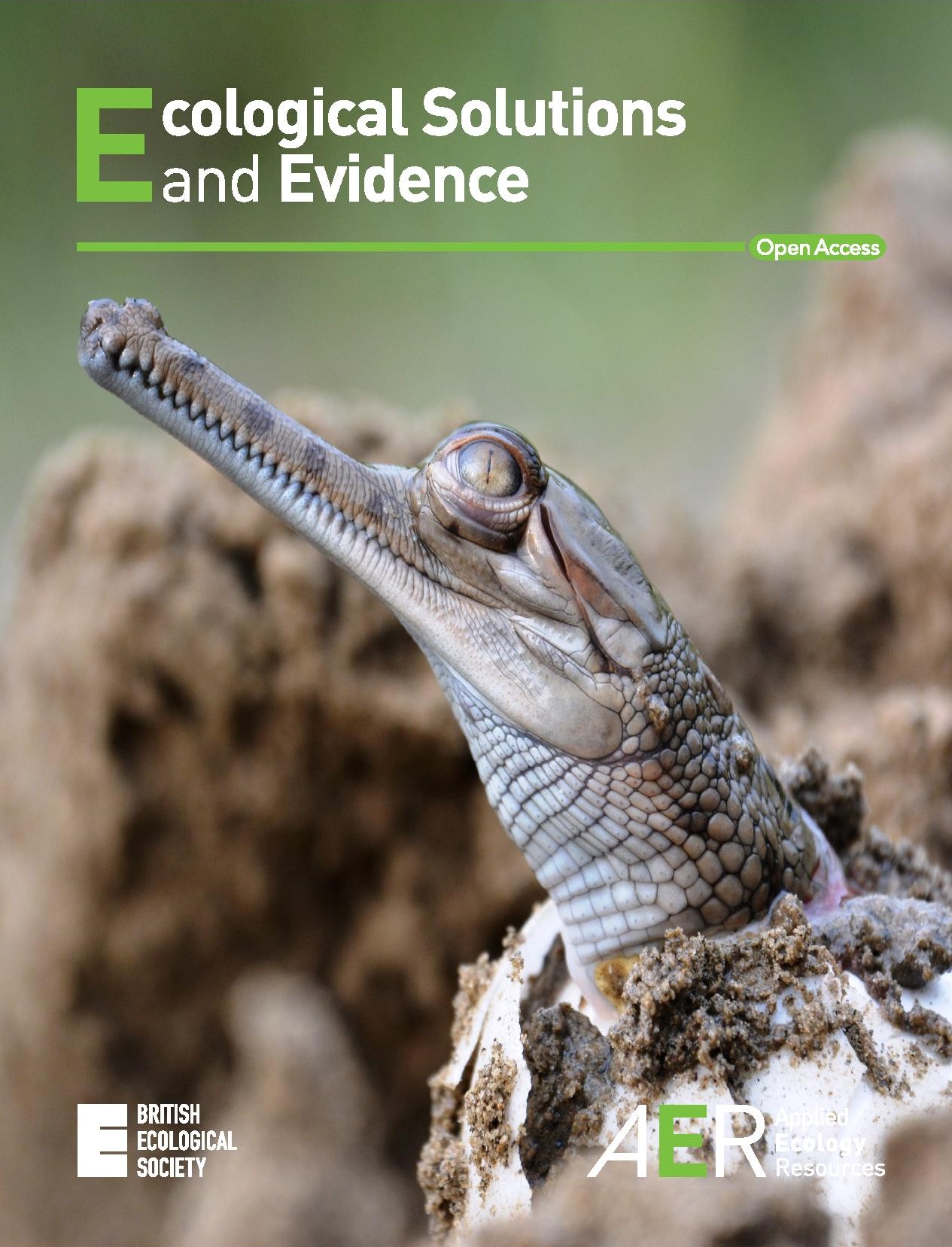Gaurav Vashistha and colleagues describe their latest research attempting to reverse the observed decline in gharial nesting by improving nesting site conditions. Find out more about the research behind the cover of our latest issue.

The gharial (Gavialis gangeticus) is a critically threatened, freshwater crocodile. Gharials nest in sandy substrates such as river banks and mid-river sand bars where females dig holes and lay their eggs. Incubation temperature determines viable development of eggs and sex of hatchlings, among several other critical traits. These factors in turn influence hatching success and survival of hatchlings, and consequently their recruitment in the population. Selection of nesting site and nesting substrate is therefore important for crocodiles in general – and gharials in particular.
Gharials inhabit flowing rivers that usually feature annual monsoon flooding which shapes the riparian zones. Flood are responsible for bidirectional transition from aquatic phase to terrestrial by sediment deposition, and from terrestrial to aquatic by erosion. Through these transitions, flooding makes sandy nesting substrates available for gharials. However, when river flow is altered by damming or diversion of water, river dynamics such as flow rate and sediment transport are disturbed which alters the riparian zone itself.
Girwa River
Girwa River holds the second largest wild breeding gharial population. A barrage became operational in 1976 and converted the free-flowing Girwa River into a reservoir. As a consequence, habitat upstream of the barrage was submerged under the reservoir and restricted gharial nesting to a <10 km river stretch. Moreover, a separate flood event in 2010 reduced river flow and channel depth by shifting the main channel flow from Girwa to Kaudiyala River.

These succession of events led to sandy river banks of the Girwa being covered by vegetation; initial colonization was by grass species, such as Phragmites and Saccharum, followed by woody vegetation comprising of Tamarix sp., Lantana camara, Adina cordifolia, etc.
The research
A 45 year- assessment of population trends revealed that gharial population in Girwa is skewed towards adult animals and recruitment of small sized animals i.e., hatchlings and yearlings, is low. Nesting surveys (2015–19) found that six of the eight known gharial nesting sites have been succeeded by vegetation and are no longer used for nesting. Further, gharial nest numbers have decreased by >40%.
Our latest research in ESE evaluates two restoration methods to counter the degrading nesting habitat and declining population numbers; vegetation removal (VR) and construction of artificial nesting sites by Sand addition (SA), performed in 2019 and 2020 respectively.
VR further reduced the nest numbers from 25 in 2017 to 19 in 2019, whereas sand addition increased the nest numbers to 36 in 2020. SA significantly increased the hatching success to 93% compared to 63% in VR and furthermore, SA only required 1/3 of the time and human resources for implementation compared to VR. We also found 63 damaged eggs from vegetation roots and elephant compression in vegetation removal (VR) compared to zero damaged eggs in sand addition (SA).
Our study showed there are two critical variables for successful gharial nesting in Girwa; availability of sand and absence of vegetation. SA almost doubled the nest numbers in 2020, and focused on restoring smaller areas and providing vegetation free sand. Compared to VR, SA also required much less resource investment.

Gharial population in Girwa is restricted in a 20 km river stretch in the reservoir and the nesting habitat is rapidly degrading. The recruitment rate is low and lack of terrestrial locomotion restricts gharial movements on land and its ability to exploit other potential nesting sites. Consequently, in-situ restoration using methods such as sand addition is the only available contingency plan at present. However, long-term conservation plans for this wild breeding population requires landscape conservation initiatives by both India and Nepal.
Read the full research: “Sand addition promotes gharial nesting in a regulated river-reservoir habitat” in Issue 2:2 of Ecological Solutions and Evidence.


